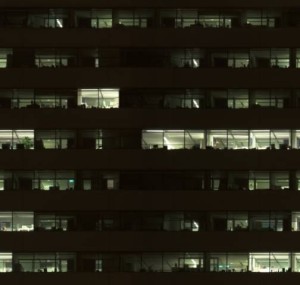Facilities managers of large commercial buildings can’t open a trade publication or scan an industry website without reading something about energy-saving products, practices, or protocols … and with good reason. In 2011, commercial buildings accounted for nearly one-fifth of the total energy used in the United States, with an aggregate expenditure of more than $132 billion per year.
The energy cost center is among the top five operating expenses for most office buildings, with HVAC and lighting comprising more than 50 percent of total consumption. Naturally, facilities professionals have focused on the most obvious – and most expensive – remedies to address soaring energy costs, such as upgrading energy management systems, lighting retrofits, improving prime movers, and purchasing deregulated energy commodities.
 You may have already installed one or more of these “usual suspects.” Or perhaps the capital just isn’t available to invest in large projects. Either way, you’ll most likely benefit from these tips on broadening your understanding of facility energy management; consider the following often-overlooked approaches to lowering costs and consumption from the ground floor to the rooftop.
You may have already installed one or more of these “usual suspects.” Or perhaps the capital just isn’t available to invest in large projects. Either way, you’ll most likely benefit from these tips on broadening your understanding of facility energy management; consider the following often-overlooked approaches to lowering costs and consumption from the ground floor to the rooftop.
If you think about all the components of an energy management strategy, tasks fall under three major categories: Buy it Better (energy procurement), Get More Efficient (O+M measures), and Waste Less (behavioral energy efficiency). In each of these categories, you can find opportunities for savings that aren’t generally at top of mind.
1. Buy It Better: Aggregating Procurement
In many high-rises, the facilities have numerous tenants and multiple meters. If you’re in a deregulated state, you may be able to aggregate your tenants’ electricity accounts for better energy pricing. In fact, it’s possible to reduce everyone’s costs by 5 to 10 percent. The reason? In a typical high-rise, tenants have varying schedules and operations. For example, Tenant A might have a 24/7 data center. Tenant B is a ground-floor restaurant serving only breakfast and lunch. Tenant C is a law firm with a regular business schedule. These tenants would all benefit from load factor aggregation.
And even if you’re not in a deregulated environment, you still have options … consider shifting to a master meter to get onto a cheaper utility electric tariff. You’ll need to install revenue-quality sub-metering for your tenants, but they’ll surely benefit from the lower pricing. In this case, all billing and costs for the sub-metering solution would be handled by a third-party operation, saving you from the billing headaches.
2. Get More Efficient: More Affordable Packaged Controls
Unless you’re blessed with 100% occupancy, your high-rise building probably operates at less-than-full capacity at least part of the day. Since most HVAC systems are “dumb” when it comes to sensing occupancy capacity at any one time, the systems provide more conditioned fresh air to the space than is required. New packaged controllers that include CO2 sensors, variable speed drives, and solid-state units (or “brains”) are an affordable way to put “smarts” into your HVAC systems.
You might be familiar with these packaged controls, but have found the capital investment to be too high. Good news: Today, most packaged HVAC units of 15-20 tons can be retrofitted for about $7,500, and many utilities offer an incentive, which brings installed costs down.
3. Waste Less: Behavioral Energy-Efficiency Programs
Tenants are an often-untapped resource for energy conservation. They’re in the building every day, and they know which faucet never stops dripping, which lights always stay on, who props open the cafeteria storage room doors and never closes them, etc. But few energy management strategies include tenant engagement as a central component.
ENERGY STAR estimates that wasteful energy practices and processes could account for up to 30 percent of a facility’s utility costs, so it certainly makes sense to start tenant outreach. If your building has a sustainability team or green team comprised of management employees and tenants, that’s an obvious place to start. In addition to covering recycling, composting, bike racks, and other common agenda items, put energy awareness on the schedule and solicit ideas.
If there isn’t a green team on the property, you can still introduce behavioral energy-efficiency measures through normal means of communication, such as newsletters, posters, and tenant meetings. Brainstorm with your team or consider purchasing one of the several behavioral energy-efficiency products on the market to jumpstart a program. Tenants are waiting to be asked for their support, and you’d be surprised at how quickly they respond to requests for small adjustments in everyday work behaviors.
Managing your facility’s energy cost center isn’t a simple task, but opportunities for savings are expanding all the time. Considering these often-overlooked ideas just the beginning.
Gary K. Markowitz
Gary K. Markowitz is the founder and president of Kilojolts Consulting Group, an energy consulting firm and energy-efficiency product developer based in Lexington, MA.

